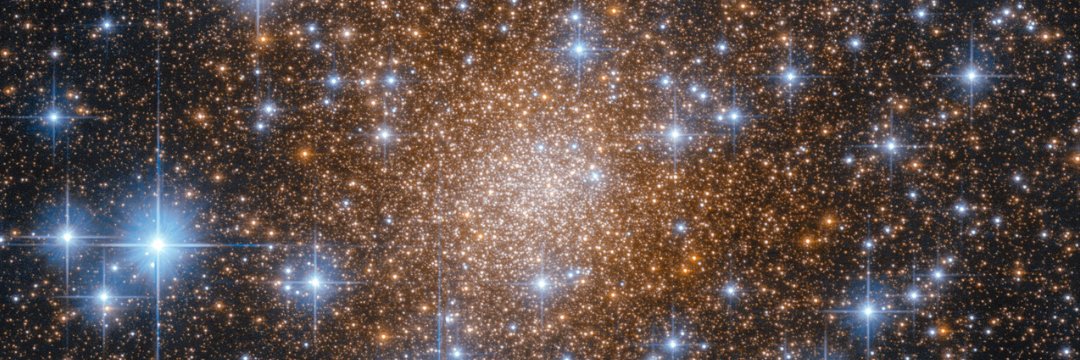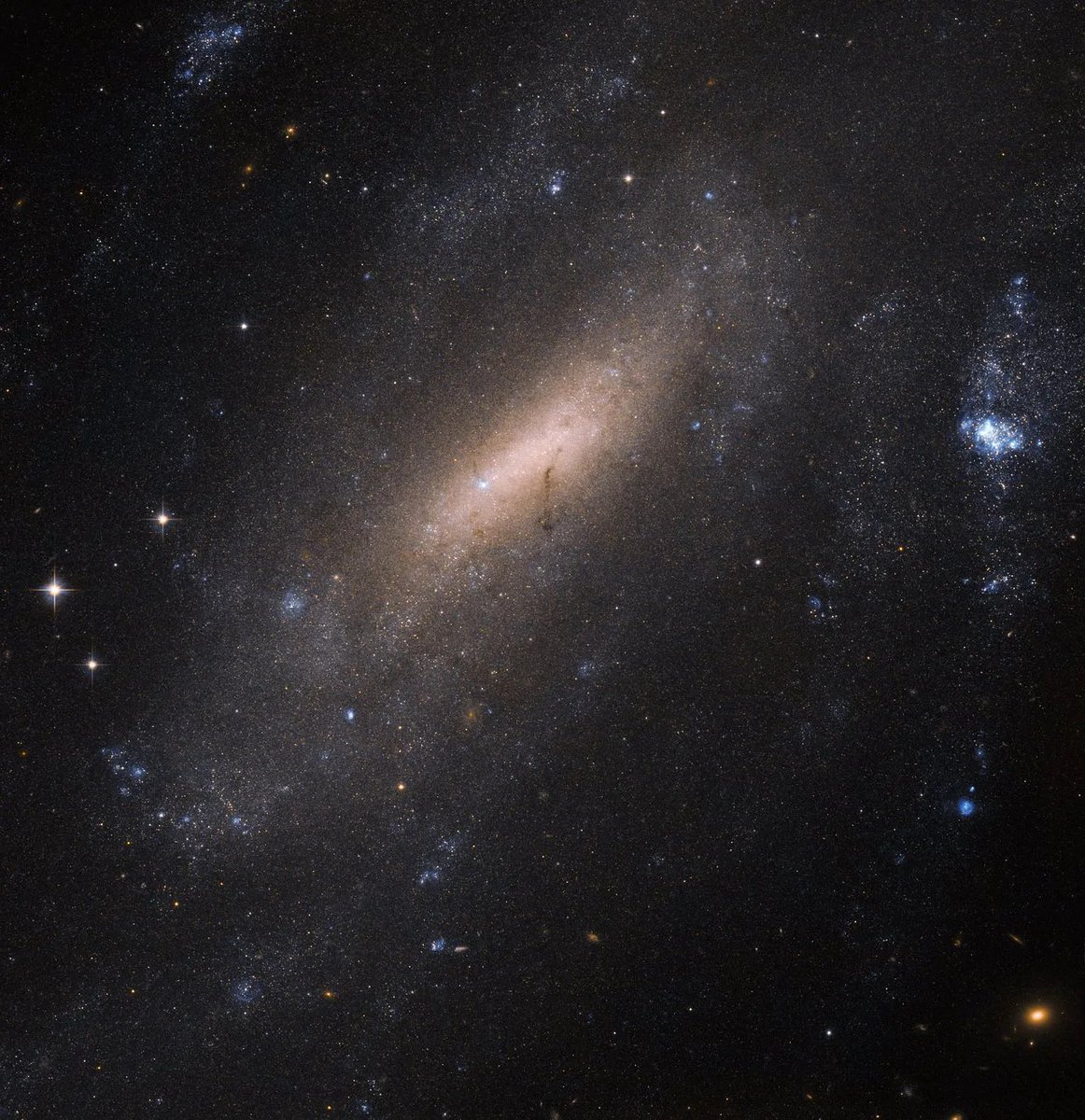
Hubble
@NASAHubble
The official X account for the NASA Hubble Space Telescope, managed and operated by NASA's Goddard Space Flight Center.
A massive, spacetime-warping cluster of galaxies swarms this week's new #HubbleFriday view! Called Abell 209, this cluster is a whopping 2.8 billion light-years away. Its mass is powerful enough that it bends light traveling from galaxies behind it: go.nasa.gov/4eN2flt

3 years & we’re only scratching the surface! On our 3rd science anniversary, we’re looking at one “toe bean” of the Cat’s Paw Nebula. This active star-forming region is revealing more about how young stars are shaping their surroundings! go.nasa.gov/3U8NsHW
Somewhere between small and supermassive black holes, an intermediate-mass black hole is hard to find because they don't shine unless they're caught in the act of eating a nearby star! Hubble and @ChandraXRay teamed up to study one of these rare events: go.nasa.gov/4maUFn0
Since its launch in 1990, @NASAHubble has changed our fundamental understanding of the @NASAUniverse. How does Hubble work, what makes it an engineering marvel, and what’s in store? Find out in this episode of Small Steps, Giant Leaps 🎙️ go.nasa.gov/4kSwx7u
A two-for-one special! ✨ In this 2016 image, the galaxy NGC 3274 glitters from 20 million light-years away. Located even farther, the galaxy PGC 213714 is also visible in the upper right: go.nasa.gov/3IEz0oQ

It's getting hot in here 🔥 New computer modeling with decades of data about the planet Uranus, from observatories including Hubble, discovered the planet generates some internal heat: go.nasa.gov/40yRJs6

Digging up a galactic time capsule 🕰️ This #HubbleFriday view shows the globular cluster NGC 1786. Because of their stability and long lives, star clusters like these act as cosmic fossils, preserving stars from the early stages of a galaxy’s formation: go.nasa.gov/3TJzDzN

Want to know what Hubble's up to? You can always check what the telescope is currently investigating (or explore its upcoming and past targets!) on our website: go.nasa.gov/4eTHeFz

¡Queremos escucharte! ¿Te ha impresionado alguna imagen de @NASAHubble? Mándanos un audio contándonos cuál es tu imagen favorita y por qué. Las instrucciones estarán en nuestro boletín de hoy, jueves. Suscríbete: nasa.gov/suscribete
Tu voz podría ser parte del próximo episodio de nuestro pódcast, Universo curioso de la NASA, dedicado al legado del @NASAHubble. Las instrucciones para enviar tu audio estarán en nuestro boletín de mañana jueves. ¡Suscríbete!: nasa.gov/suscribete
The beautiful yet complex NGC 5189 consists of two nested structures, tilted with respect to each other. Don't you think it looks a bit like a snake? These formations are expanding away from their central star in different directions. 🐍 go.nasa.gov/4nT2zDb
#OTD in 1994, fragments of Comet Shoemaker-Levy 9 began to rain down on Jupiter. Hubble captured the impacts, and this first viewing of an interplanetary impact in our solar system taught astronomers more about Jupiter, comets, and the science of impacts: go.nasa.gov/3ILII8K

NGC 4388 is one of more than 1,300 galaxies within the Virgo Cluster. By being part of such a tightknit galactic group, NGC 4388 feels the effects of gravitational interactions with its neighbors. Find out how: go.nasa.gov/4nVmphk

Are we alone? To find out, we’re building the Habitable Worlds Observatory. This powerful space telescope uses proven technologies from @NASAHubble, @NASAWebb, and @NASARoman to look for signatures of planets that can support life — and maybe life itself. go.nasa.gov/44KCbT7
About two-thirds of the spiral galaxies in our universe contain a bar of stars at their centers. That includes our home galaxy, the Milky Way, and the galaxy in this 2016 Hubble image: IC 5201. This galaxy resides 40 million light-years away: go.nasa.gov/3IwVYOp

Happy #FourthOfJuly from Hubble! 🇺🇸 Stars shine red, white, and blue in this new Hubble image of globular cluster ESO 591-12. Hotter stars are bluer, giving off shorter wavelengths of light, and red stars are cooler, emitting longer wavelengths: go.nasa.gov/4khuvhb

Fireworks of the cosmos 🎇 This glittering collection of stars captured by @NASAHubble is NGC 3603, located 20,000 light-years away in the constellation Carina.
Eagle’s wings or galaxy 🦅? This is IRAS 16399-0937, a galaxy hosting a double nucleus that is enshrouded in wings of dust clouds. The nuclei are two distinct cores in the process of merging, which intensely radiates energy: go.nasa.gov/44o7SSc
